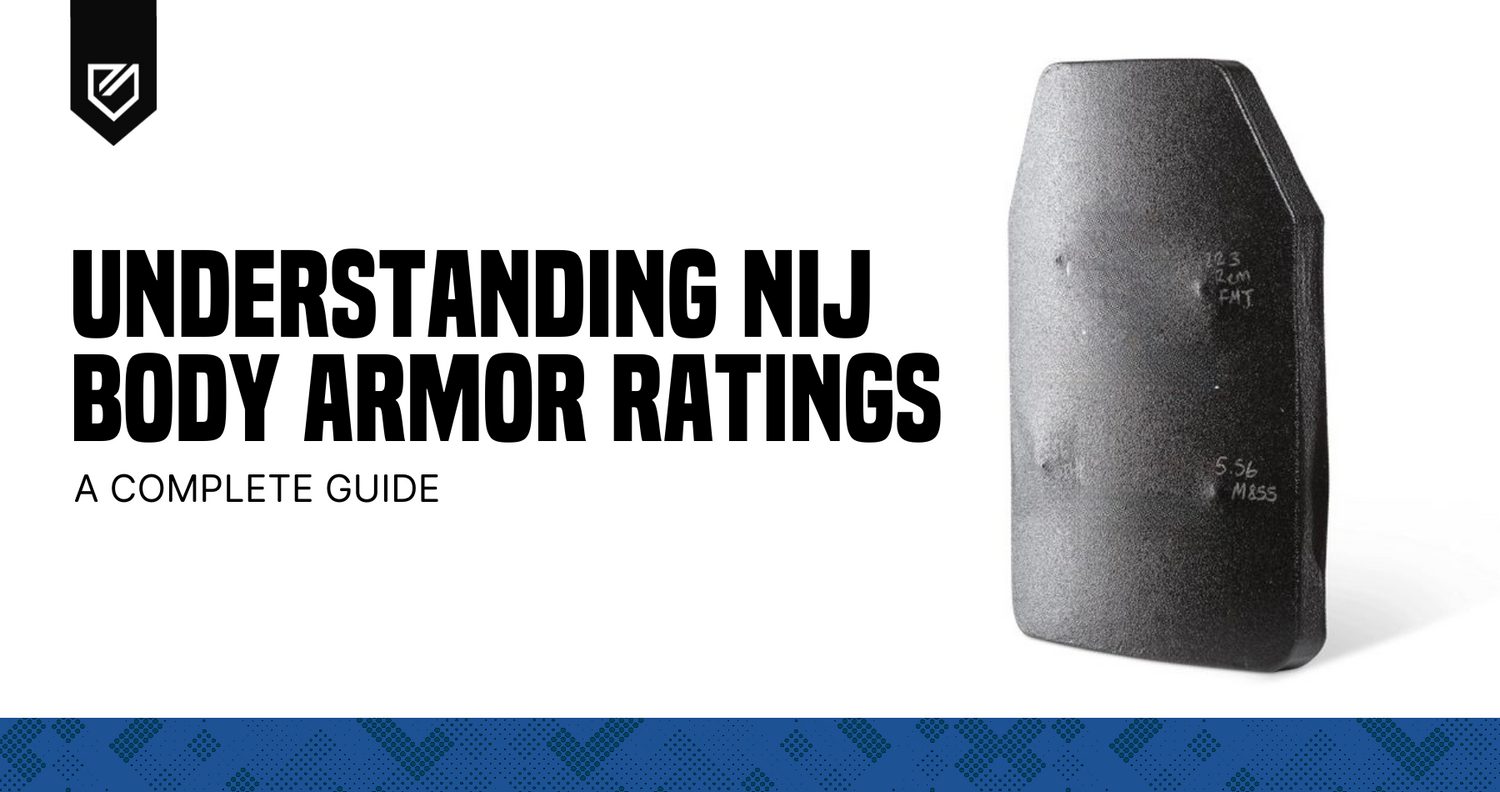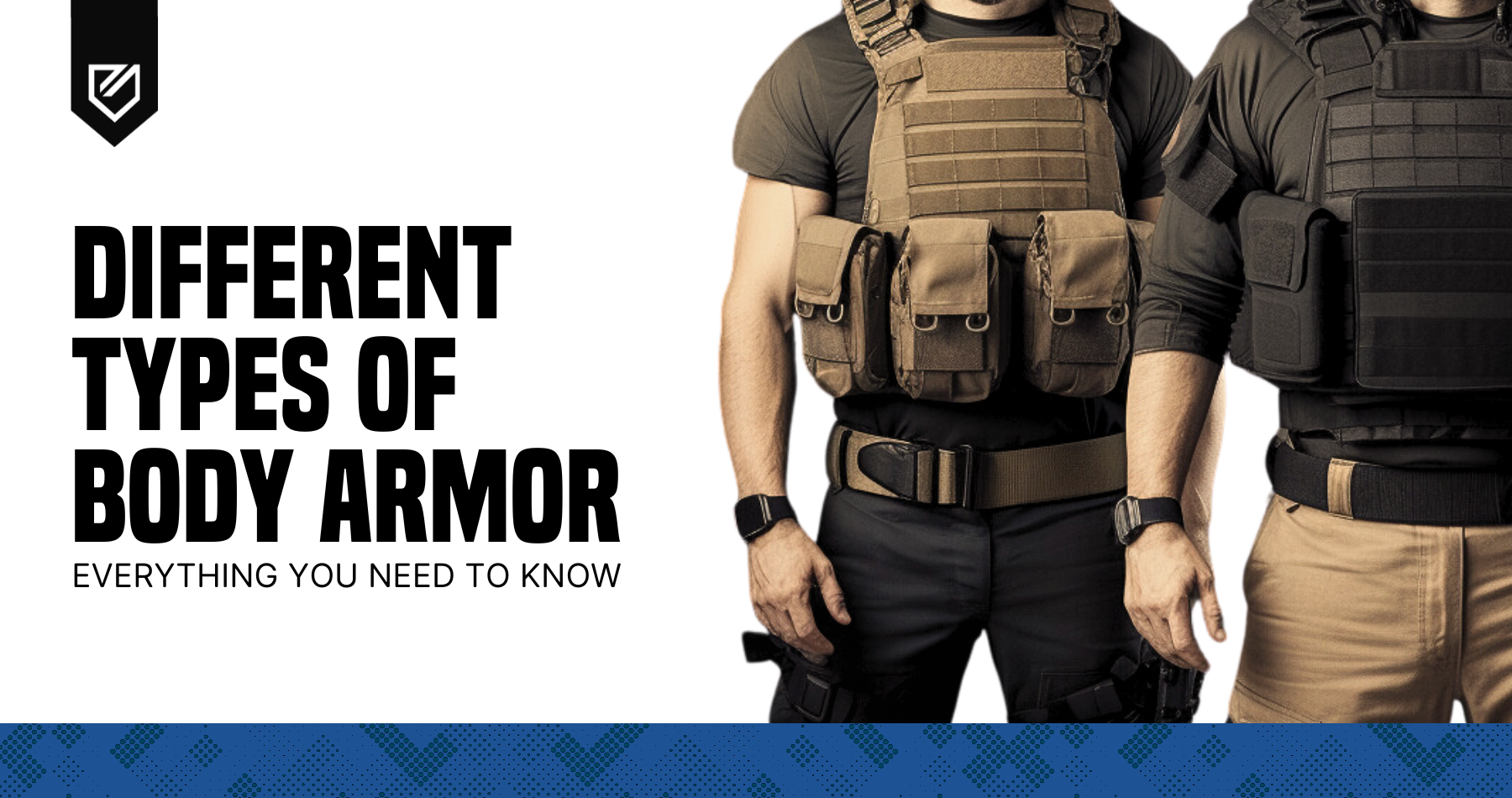When your life is on the line, there's no room for a guessing game. Choosing the right body armor could mean the difference between being protected and facing life-altering consequences, and it's not just about buying the toughest-looking gear.
It's about understanding the science-backed ratings by the National Institute of Justice (NIJ) that define each armor's capabilities. This article will equip you with the essential knowledge to select armor that stands up to the threats you're most likely to encounter.
National Institute of Justice (NIJ) Protection Levels
Armor protection levels have evolved significantly over time. The NIJ began establishing body armor standards in the 1970s, improving technologies to meet the changing demands of law enforcement and military personnel. With time, these ratings have become benchmarks for armor performance, steering the developments in armor technology.

Breaking Down NIJ Armor Ratings
To offer a granular understanding of NIJ ratings, we breakdown each level, offering insights into the protection they afford:
NIJ Level I Body Armor
Historically the initiation point of armor levels, it is now considered obsolete and relegated to being a collectible item.
NIJ Level IIA Body Armor
Serving as the current introductory level of armor, Level IIA offers lightweight and flexible protection albeit being somewhat outdated.
Despite its declining use, it might still find utility among night watchmen or security personnel in low-violence zones. It's important to note that the NIJ is working towards retiring this level in their upcoming revision of standards.
Protection Offered:
- 9mm Full Metal Jacket (FMJ) rounds at 1165 ft./s (low velocity)
- .40 S&W FMJ at 1065 ft./s
NIJ Level IIIA Body Armor
Level IIIA represents a significant leap in protection, capable of stopping even high-velocity handgun rounds and offering enhanced ballistic resistance.
This level finds utility in a wide range of modern protective gear, including covert vests, owing to its balance between protection and flexibility.
Protection Offered:
- .357 SIG FMJ Flat Nose (FN): used in semi-automatic pistols and known for its speed and stopping power.
- .44 Magnum Semi-Jacketed Hollow Point (SJHP): a large, powerful round used in revolvers.

NIJ Levels III Body Armor
Signifying the entry point into rifle protection, this level utilizes hard plates, ensuring protection against higher caliber threats at the cost of being heavier and non-concealable.
Protection Offered:
- 7.62mm FMJ Steel Jacketed (NATO Ball): ammunition used in rifles, specifically designed for warfare and used in the military.
- Can also protect against all types of ammunition protected by the lower levels.
NIJ Level IV Body Armor
Representing the pinnacle of armor levels, it guarantees optimum protection, withstanding high-velocity threats.
Protection Offered:
- A single hit from a 7.62MM armor-piercing rifle bullet at 2880 ft./s
Special Armor Levels
Apart from the official ratings, special ratings like III+ and IIIA+ offer enhanced protection, filling the gaps between the standard levels.
These unofficial ratings provide options for those seeking tailored solutions, offering enhanced protections against specific threats like M855 “green tip” ammo or M193, making it a preferred choice for users seeking extra shields.
Advanced Topics in Armor Protection
Understanding armor protection requires a deep knowledge not only of the standardized rating systems but also of the finer details that can greatly influence the efficacy of a protective solution. Below, we detail several advanced topics essential to mastering the subject.
Utilizing Additional Protection
While armor can provide substantial protection on its own, the utilization of supplementary elements such as trauma pads can further enhance safety.
Trauma pads, made from non-ballistic materials, work to reduce blunt force trauma, potentially saving the wearer from serious injuries.
Integrating additional shielding solutions such as ballistic blankets and shields can further ensure one's safety in high-threat environments.
Multi-Hit Performance
Understanding the capability of an armor to withstand multiple hits is essential, especially in high-risk environments. An armor's multi-hit performance is determined through rigorous testing where it is subjected to several rounds of firearm discharges to understand its protective capacity better.
Being knowledgeable about an armor’s multi-hit performance could be a lifesaver, helping to choose armor designed to maintain its structural integrity even under extreme conditions.
Material Considerations
Different materials offer a range of advantages and disadvantages in terms of protection, weight, and flexibility. Common materials include:
- Aramid Fibers: Used in soft armor, they offer good ballistic protection and are heat-resistant.
- UHMWPE: Ultra-High-Molecular-Weight Polyethylene offers excellent protection and is lighter compared to other materials, but can be expensive.
- Steel: Typically used in hard armor, it's cost-effective and offers robust protection, but is heavier than other materials.
Stab and Spike Proof Vests
Aside from shielding against ballistic threats, some armors are designed to protect against edged weapons and spikes. These vests use materials that prevent penetration from sharp objects, providing a crucial layer of protection in environments where such threats are prevalent.
Different levels of protection are available, tailored to various threat levels, which can be pivotal in selecting the appropriate armor for a specific operational environment.
Choosing Your Armor Based on NIJ Protection Levels
Assess Your Environment
Understanding the environment where you will be using the armor is crucial. Urban settings might expose you to different types of threats compared to a war zone. Analyzing the potential threats you can face will guide you in choosing the right NIJ level of protection.
Comfort and Mobility
While higher NIJ levels offer greater protection, they also come with increased weight and decreased mobility. It’s vital to strike a balance between protection level and the ability to move freely. Often, individuals choose a level of armor that provides a protective coverage they are comfortable with, without severely hindering mobility.
Consult with Experienced Individuals
Seeking advice from individuals who have experience in wearing body armor can provide invaluable insights. They can share personal experiences and tips on choosing armor that meets your protective needs while aligning with your comfort preferences.
Personal Preference
Finally, your choice should also factor in personal comfort and preference. Some individuals may prioritize maximum protection while others might prioritize comfort and mobility. It’s a personal choice and understanding the NIJ levels helps in making an informed decision.
By considering the above factors and having a deep understanding of what each NIJ level entails, you can make a more informed decision in selecting the body armor that is right for you, catering to your specific needs and operational demands.
Why Understanding NIJ Ratings is Important
Whether one is a security personnel or an individual aiming to boost personal security, having the knowledge about NIJ ratings can substantially guide you in making choices.
As we navigate an ever-evolving landscape where threats are constantly changing, being updated with the most recent developments in body armor ratings and technologies can act as a cornerstone in fostering a safer future.
We sincerely hope that this guide proves beneficial in helping you understand the intricate details of NIJ body armor ratings. If you find this guide useful, we encourage you to share it with friends, family, and colleagues to spread awareness and foster a community grounded in safety and knowledge.
Frequently Asked Questions
What is Level 5 Body Armor?
As of the last update to the NIJ standards (which goes up until Level IV), there is no officially recognized Level 5 body armor according to NIJ standards. It is important to remain cautious and adhere to the recognized and tested standards to ensure reliable protection.
Is there any development regarding the introduction of Level 5 body armor in the NIJ ratings?
As of now, the NIJ has not officially released or endorsed a Level 5 body armor rating. However, the world of ballistic protection is ever-evolving, with continuous research and development aimed at enhancing protection levels. It is recommended to keep an eye on official announcements from the NIJ for any updates on this matter.
Are there any technologies on the horizon that might revolutionize body armor standards in the future?
Yes, with advancements in materials science and technology, we are witnessing a trend towards the development of lighter and stronger materials. Innovations such as nanotechnology and liquid armor technologies are under research, which promises to revolutionize body armor standards, offering unprecedented levels of protection coupled with comfort.
How often does the NIJ update its body armor standards?
The NIJ doesn’t follow a strict timeline for updating its body armor standards. The updates are usually based on the advancements in technology and the emergence of new threats.
Historically, updates have happened approximately every decade, with the last update being in 2008 before a more recent update. It is essential to regularly check the official NIJ website for the most current information.




Leave a comment
This site is protected by hCaptcha and the hCaptcha Privacy Policy and Terms of Service apply.